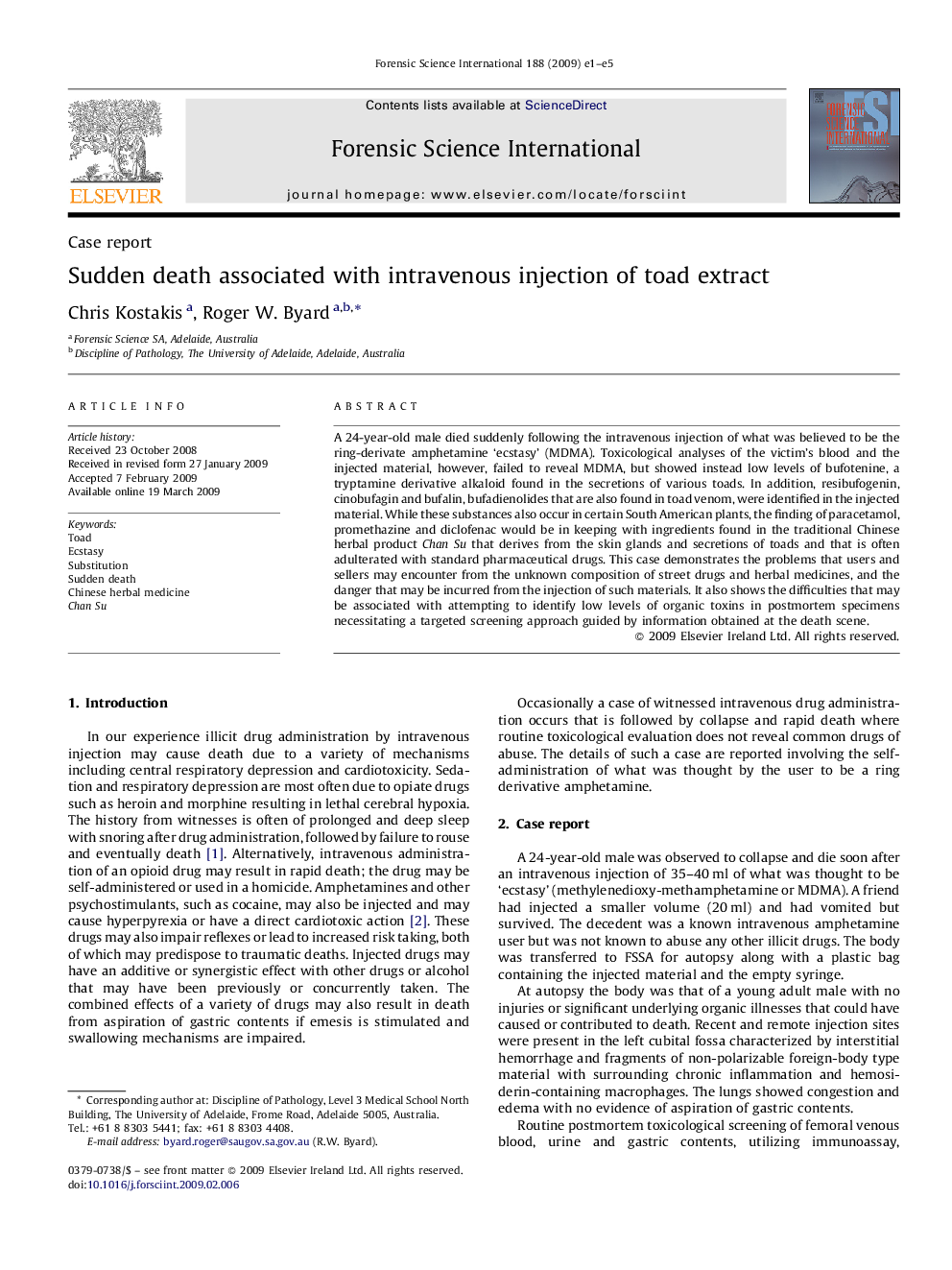| Article ID | Journal | Published Year | Pages | File Type |
|---|---|---|---|---|
| 97394 | Forensic Science International | 2009 | 5 Pages |
A 24-year-old male died suddenly following the intravenous injection of what was believed to be the ring-derivate amphetamine ‘ecstasy’ (MDMA). Toxicological analyses of the victim's blood and the injected material, however, failed to reveal MDMA, but showed instead low levels of bufotenine, a tryptamine derivative alkaloid found in the secretions of various toads. In addition, resibufogenin, cinobufagin and bufalin, bufadienolides that are also found in toad venom, were identified in the injected material. While these substances also occur in certain South American plants, the finding of paracetamol, promethazine and diclofenac would be in keeping with ingredients found in the traditional Chinese herbal product Chan Su that derives from the skin glands and secretions of toads and that is often adulterated with standard pharmaceutical drugs. This case demonstrates the problems that users and sellers may encounter from the unknown composition of street drugs and herbal medicines, and the danger that may be incurred from the injection of such materials. It also shows the difficulties that may be associated with attempting to identify low levels of organic toxins in postmortem specimens necessitating a targeted screening approach guided by information obtained at the death scene.
